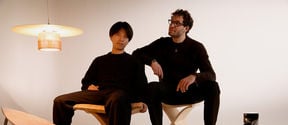Jouni Punkki: The future of concrete is 3D
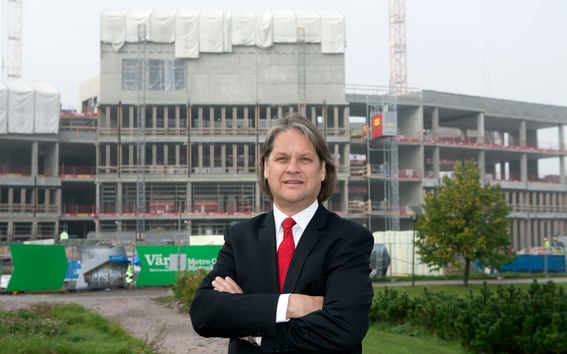
A sturdy bull stands with its neck arched, as if it was ready to butt with its sharp horns any second. The surface of the streamlined bull is unbelievably smooth. It is difficult to believe that Jouni Punkki’s bull sculpture is made of concrete. After all, the general impression of the material is that it is dullish grey and rough. Punkki’s bulls are blue, red and white.
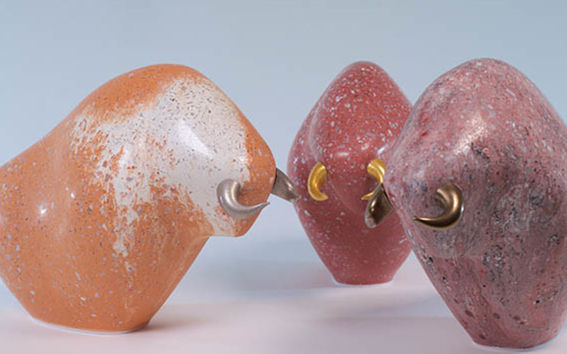
Jouni Punkki has been making sculptures as a hobby for some twenty odd years, but his main job is at Aalto University. Punkki has worked for one and a half years as Professor of Practice in concrete technology at Aalto University.
Punkki (b. 1963) graduated as a Doctor from the Norwegian University of Science and Technology in 1995 and from the Helsinki University of Technology in 2000. Thereafter he worked, for instance, at Parma Oy. In 2015, he set up consulting agency Betoniviidakko Oy, which offers specialist services in concrete construction.
Concrete from a printer
At Aalto University, research led by Punkki focuses on, for instance, resource efficiency and the ecological aspects of concrete construction. Challenges include the CO2 emissions caused by the production of cement and the availability of raw materials for concrete. Another important aspect of research is taking advantage of digitalisation in concrete manufacturing.
‘We have just started a thesis project that aims to find technologies for automatic and continuous measurements of fresh concrete.’
Also Punkki’s company Betoniviidakko has examined and implemented the possibilities of digitalisation. It has been involved, for instance, in designing the 3D surfaces of the facade of Helsinki Kruununvuorenranta Waste Transfer Terminal. Last year, the building was awarded the prizes for Concrete Structure and Concrete Facade of the Year.
There is a lot of talk about 3D printing of concrete. The results have so far remained modest, but with the development of techniques, 3D printing may bring significant changes to construction.
‘It is an important area of research and a major opportunity for concrete. Printing with other construction materials will be even more challenging. The proliferation of 3D printing in construction is still awaiting new innovations and it will be a long while yet before houses are printed at the construction site. I believe more in general development of automation. For example, automation could be used more than the current level in the manufacture of elements.’
In 3D printing, the aim is to build structures without moulds. On the other hand, Punkki also regards the traditional casting of concrete in moulds as a strength.
‘Concrete can be cast to virtually any format, and in this area there are still many untapped opportunities. Very diverse structures and surfaces can be made of concrete. The making of the mould is a challenge, especially when aiming for complex shapes. But even here, 3D techniques come in handy. Quite complex mould surfaces can be produced using 3D design and manufacture.’
Seven times sanding
Punkki also uses digital technology in sculpture, combining it with manual work. He designs the model mainly digitally, as well as the mould made from it. The mould is printed with a 3D printer.
After Punkki has removed the sculpture from the mould, he devotes time to sanding and polishing the surface carefully by hand. The sanding is carried out in several steps, reaching a glossy surface after seven sessions of sanding.
With his background in engineering, Punkki says that he approaches sculpture from a technological rather than an artistic perspective. He is familiar with the possibilities and limitations of concrete.
‘Concrete is a versatile medium. It can be cast in different shapes, a variety of colours can be used, and the surface can be treated in many ways. I aim at simple and continuous shapes in my art. Some of my works are almost abstract, and I want to give people freedom to see different things in them.’
Punkki thinks that his works are located in between art and design. Although all the works are unique, he uses the same design and even the mould several times. Toro sculpture representing a bull is an example of that.
‘There are two versions of it, but I have made sculptures with many colour variations. I am not interested in serial production, though.’
Jouni Punkki’s concrete sculpture exhibition Toros & Torsos is on show at Galleria Saima in Helsinki (Neitsytpolku 9) April 2018.
- Published:
- Updated:
Read more news

Robotics needs safe behavior patterns
Robotics and autonomous systems are developing rapidly. Algorithms that withstand disturbances and uncertainties in the system model and environment are critical for development.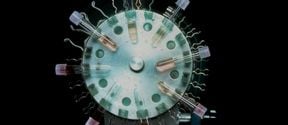
A new way to do controlled experiments in medicine: simulate the control
Generative AI could augment randomized controlled trials.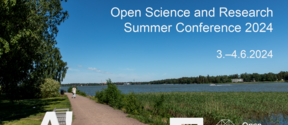
Open Science and Research Summer Conference 2024 will be hosted by Aalto University
Open Science and Research Summer Conference 2024 will be held at Aalto University’s Otaniemi campus and in Zoom 3.–4.6.2024. Please register by May 3.